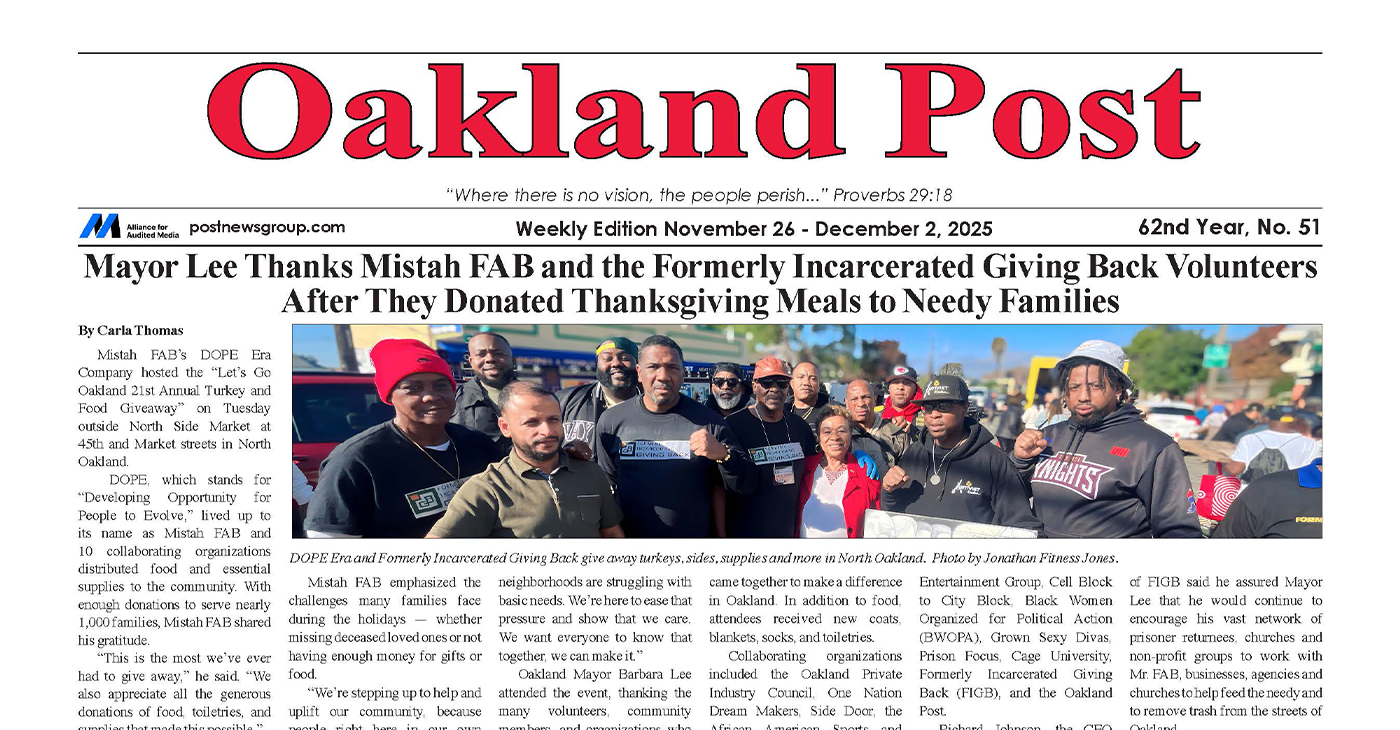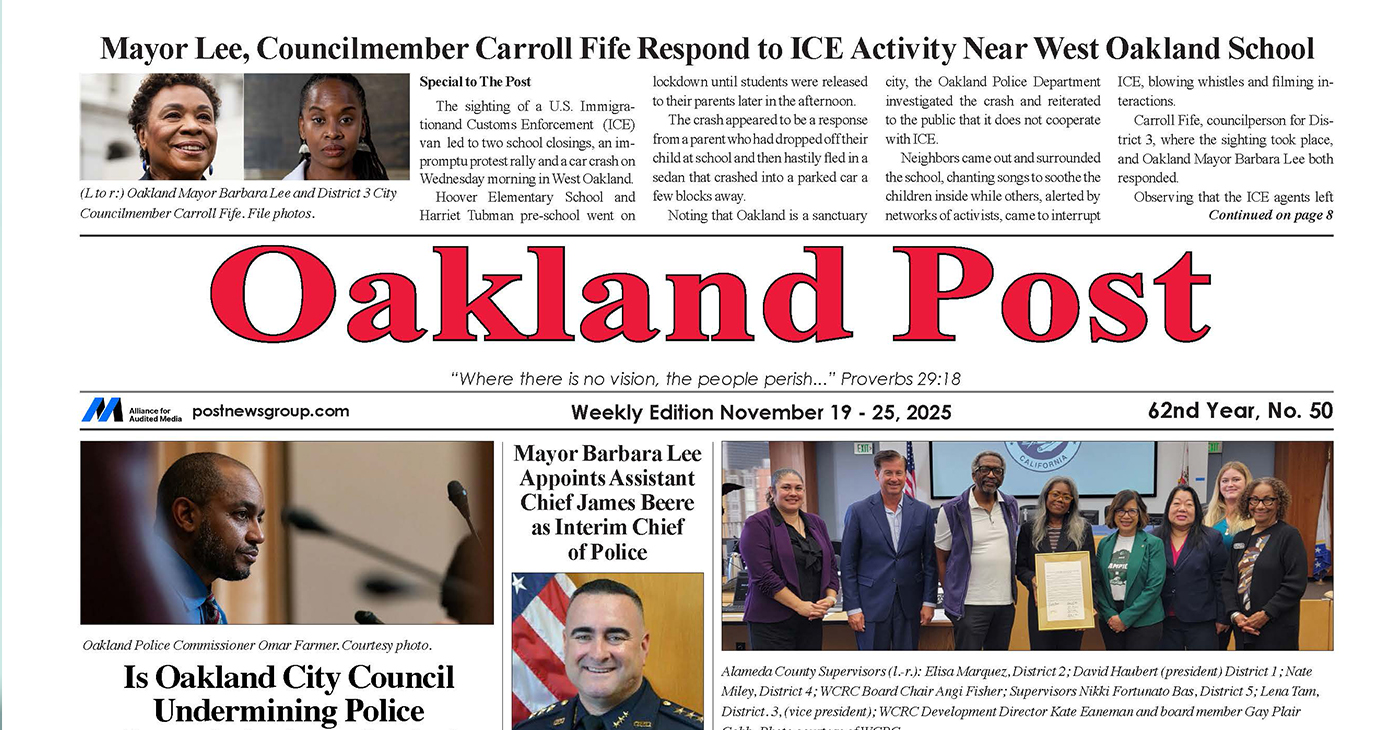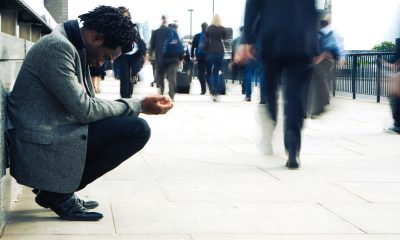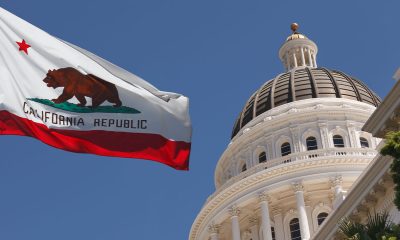Bay Area
California’s New COVID Plan Includes Faith Community, Public Health Leaders
Pointing out that California has one of the lowest COVID-19 death rates in the country, Governor Gavin Newsom added that the SMARTER plan will also focus on preparing the state in the event that there is a similar crisis in the future. Ensuring that the plan is equitable and addresses the needs of Californians of all backgrounds is a priority as well, he emphasized.

By Tanu Henry, California Black Media
Black faith and public health leaders are hailing Gov. Gavin Newsom’s new COVID response plan.
Last week, Gov. Gavin Newsom unveiled the proposal designed to be more strategic, nimble and sustainable than it is reactive. California is the first in the nation to transition the Coronavirus crisis from a pandemic to an endemic.
Newsom made the announcement three days after he lifted the statewide indoor mask mandate.
Dubbed the SMARTER Plan, an acronym that stands for Shots, Masks, Awareness, Readiness, Testing and Rx, the state’s new COVID response plan will focus on precautionary measures and interventions rather than broad mandates on masking, sheltering in place or shutdowns.
“This has been a remarkable two years for everyone. No one has been immune from the stress and travails, the heartache and devastation. But many of us have shared those burdens disproportionately, unequally,” said Newsom. “Those issues are all part and parcel of the consciousness that brings us to this moment.
The governor was speaking at a warehouse in Fontana that the state set up to handle logistics during the pandemic.
Pointing out that California has one of the lowest COVID-19 death rates in the country, Newsom added that the SMARTER plan will also focus on preparing the state in the event that there is a similar crisis in the future. Ensuring that the plan is equitable and addresses the needs of Californians of all backgrounds is a priority as well, he emphasized.
“We are moving away from a crisis mindset to living with this virus,” said Newsom. “We have come to understand what was not understood at the beginning of this crisis: that there is no ending.
“We have a more prescriptive details and strategies to continue those efforts in partnership with 800 community-based organizations, 200 mobile clinic sites, in partnership with our state-owned testing labs, in partnership with our schools and faith-based leaders,” he added.
According to the governor’s office, over 70 million COVID vaccines have been administered in the state. About 80% of Californians have received one dose and about 70% are fully vaccinated.
Sam Casey, executive director of Congregations Organized for Prophetic Engagement (COPE) and pastor of New Life Christian Church in Fontana, says he has been involved in the fight against COVID since the onset of the pandemic.
“We engaged in testing, bringing greater awareness as well as making sure some of the most marginalized communities had access to not only testing but more importantly vaccination,” he said.
“We are still engaged in that fight that’s relevant to the SMARTER plan,” Casey continued. “We’ve helped individuals get shots in their arms. We’ve presented some 75,000 N95 masks to our congregations and communities. We have passed out some 15,000 COVID tests and continue to create greater awareness in our communities.”
Dr. Jerry Abraham, director of Kedran Vaccines in South Los Angeles, runs a health center that provides COVID-19 inoculation to people in neighborhoods that have been historically underserved.
“We continue to see a continued decline in infection rates, in hospitalizations and in deaths — and that’s really exciting,” said Abraham, speaking at a press briefing for the African American press organized by VaccinateAll58, the California Department of Public Health’s COVID-19 response program.
Although about 82,000 Californians have died from COVID-related causes and more than 8 million have been diagnosed with the disease, Abraham says he’s hopeful about entering this next phase of the state’s response.
“We are really in this transition period from pandemic to endemic, and there really is this new conversation about learning to live with COVID. That is how we are going to go about our business and how we are going to go about staying in business and staying in school, going to church – all of these things are a part our strategy to move forward.”
Abraham encouraged people to continue to be vigilant, wear masks when necessary, and take steps to protect themselves and the people they love.
Black Californians, who make up about 6% of the state’s population, currently account for about 7% of confirmed deaths from COVID and more than 5% of all cases.
Fontana Mayor Acquanetta Warren, who is African American, welcomed the governor to her city and thanked him for leading the fight against COVID.
“California has led the nation’s fight against COVID-19 with early, robust, public health measures that have helped to save countless lives,” she said. “In Fontana, we remain focused and ready to adopt to the evolving pandemic.”
Keeping incidents of COVID low in the state, will require the participation of everyone, said Kirsten Bibbins-Domingo, chair of Epidemiology and Biostatistics at the UC San Francisco.
“California’s success in this next phase of the pandemic depends on our focus on those who have borne the brunt throughout: essential workers, older adults, Latino, Black, and Pacific Islander communities, and those with more limited resources,” she said. “The equitable response is the smarter response, and I hope the plans outlined here receive sustained attention and investment,” Bibbens-Domingo said.
Andy Slavitt, former senior advisor for COVID-19 Response in the Biden Administration, says Newsom’s post-pandemic strategy should be a model for states around the country.
“California’s SMARTER plan should represent a turning point in managing the pandemic from taking whatever the virus brings us to being prepared to manage whatever challenges come next,” he said.
Newsom said the state will also be analyzing wastewater to track the evolution of the virus.
“As we enter the next phase of the pandemic, the state is better equipped than ever to protect Californians from COVID-19 with smart strategies that save lives and advance our ongoing recovery,” said Newsom.
“Building on proven tools – rooted in science and data – that have been honed over the past two years, we’re keeping our guard up with a focus on continued readiness, awareness and flexibility to adapt to the evolving pandemic. As we have throughout the pandemic, the state will continue applying the lessons we’ve learned about the virus to keep California moving forward.”
Aldon Thomas Stiles contributed to this report.
Alameda County
Seth Curry Makes Impressive Debut with the Golden State Warriors
Seth looked comfortable in his new uniform, seamlessly fitting into the Warriors’ offensive and defensive system. He finished the night with an impressive 14 points, becoming one of the team’s top scorers for the game. Seth’s points came in a variety of ways – floaters, spot-up three-pointers, mid-range jumpers, and a handful of aggressive drives that kept the Oklahoma City Thunder defense on its heels.

By Y’Anad Burrell
Tuesday night was anything but ordinary for fans in San Francisco as Seth Curry made his highly anticipated debut as a new member of the Golden State Warriors. Seth didn’t disappoint, delivering a performance that not only showcased his scoring ability but also demonstrated his added value to the team.
At 35, the 12-year NBA veteran on Monday signed a contract to play with the Warriors for the rest of the season.
Seth looked comfortable in his new uniform, seamlessly fitting into the Warriors’ offensive and defensive system. He finished the night with an impressive 14 points, becoming one of the team’s top scorers for the game. Seth’s points came in a variety of ways – floaters, spot-up three-pointers, mid-range jumpers, and a handful of aggressive drives that kept the Oklahoma City Thunder defense on its heels.
One of the most memorable moments of the evening came before Seth even scored his first points. As he checked into the game, the Chase Center erupted into applause, with fans rising to their feet to give the newest Warrior a standing ovation.
The crowd’s reaction was a testament not only to Seth’s reputation as a sharpshooter but also to the excitement he brings to the Warriors. It was clear that fans quickly embraced Seth as one of their own, eager to see what he could bring to the team’s championship aspirations.
Warriors’ superstar Steph Curry – Seth’s brother – did not play due to an injury. One could only imagine what it would be like if the Curry brothers were on the court together. Magic in the making.
Seth’s debut proved to be a turning point for the Warriors. Not only did he contribute on the scoreboard, but he also brought a sense of confidence and composure to the floor.
While their loss last night, OKC 124 – GSW 112, Seth’s impact was a game-changer and there’s more yet to come. Beyond statistics, it was clear that Seth’s presence elevated the team’s performance, giving the Warriors a new force as they look to make a deep playoff run.
Activism
Oakland Post: Week of November 26 – December 2, 2025
The printed Weekly Edition of the Oakland Post: Week of November 26 – December 2, 2025

To enlarge your view of this issue, use the slider, magnifying glass icon or full page icon in the lower right corner of the browser window.
Activism
Oakland Post: Week of November 19 – 25, 2025
The printed Weekly Edition of the Oakland Post: Week of November 19 – 25, 2025

To enlarge your view of this issue, use the slider, magnifying glass icon or full page icon in the lower right corner of the browser window.
-

 Activism3 weeks ago
Activism3 weeks agoOakland Post: Week of November 12 – 18, 2025
-

 Activism4 weeks ago
Activism4 weeks agoOakland Post: Week of November 5 – 11, 2025
-

 Activism2 weeks ago
Activism2 weeks agoIN MEMORIAM: William ‘Bill’ Patterson, 94
-

 Activism3 weeks ago
Activism3 weeks agoHow Charles R. Drew University Navigated More Than $20 Million in Fed Cuts – Still Prioritizing Students and Community Health
-

 #NNPA BlackPress3 weeks ago
#NNPA BlackPress3 weeks agoThe Perfumed Hand of Hypocrisy: Trump Hosted Former Terror Suspect While America Condemns a Muslim Mayor
-

 #NNPA BlackPress3 weeks ago
#NNPA BlackPress3 weeks agoProtecting Pedophiles: The GOP’s Warped Crusade Against Its Own Lies
-

 Bay Area3 weeks ago
Bay Area3 weeks agoNo Justice in the Justice System
-

 #NNPA BlackPress4 weeks ago
#NNPA BlackPress4 weeks ago2026 Subaru Forester Wilderness Review: Everyday SUV With Extra Confidence


























































